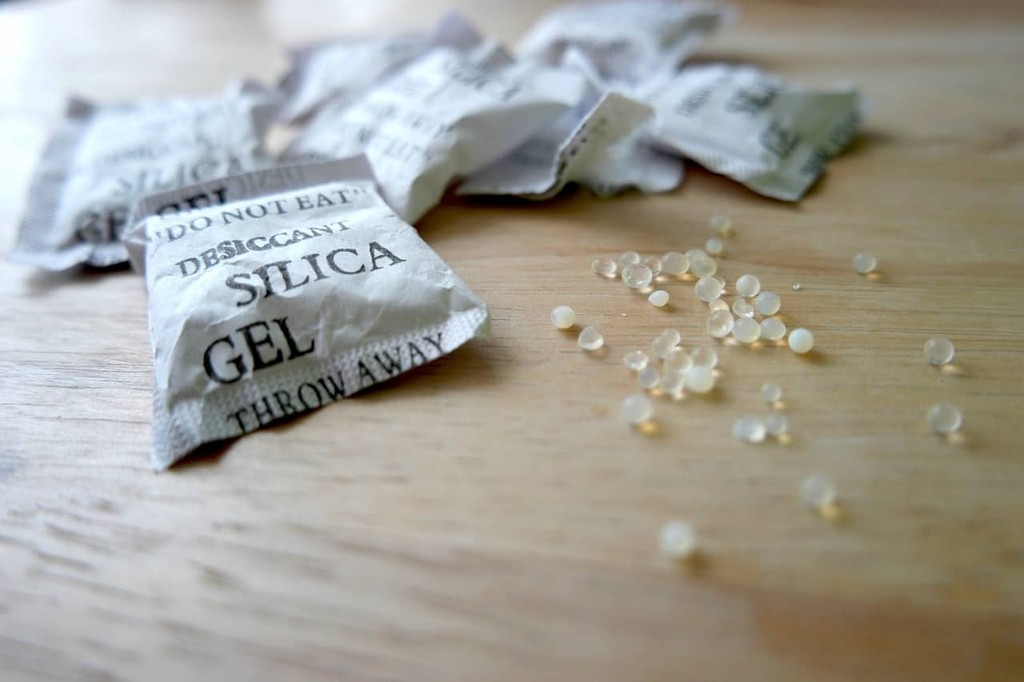A swift Google search will generate several bed bug treatment options. The problem is that while some of those treatments work astonishingly well against bed bugs, others fall short of their promise. Silica gel is arguably one of the most reliable bed bug treatment options in modern society.
If you have never used Silica gel before, there is no doubt that you have several queries concerning it. This post seeks to answer all your questions concerning this incredible bed bug treatment options. Some of the main questions that we will answer include:
- What is Silica gel?
- Is Silica gel effective against bed bugs?
- Is Silica gel safe for you, your loved ones, and pets?
Table of Contents
What is Silica Gel?
Silica gel is a soft, white powder composed of silicon dioxide or silica, a compound with moisture absorbing properties. You will often find Silica in granular form in everyday items like shoes, electronics and clothes during shipment. Silica has several applications but it is often used as:
- A drying agent to inhibit moisture accumulation in shoes and other items
- An anti-caking agent to inhibit formation of lumps in powdered pharmaceuticals
Apart from the two uses mentioned above, Silica gel is increasingly growing popular as a pest control measure. Its popularity is largely to the fact that it is safe for pets. Nonetheless, it is harmful when ingested, hence, the ‘do not eat’ warning on Silica packets.
If you are lucky, you will find silica gel in your shipped items like electronics, shoes or clothes. They are the tiny packets written “do not eat” on the packaging. You can also buy Silica gel on online retail stores like Amazon or in your local supermarket.
Using Silica Gel to Kill Bed Bugs
People often use Silica as an insecticide you are likely wondering whether it can kill bed bugs considering their resilience. The answer is yes! Like diatomaceous earth, silica gel destroys the outer waxy coating of bed bugs that usually helps them conserve moisture.
Silica gel is not as effective as other popular safe bed bug treatment options such as heat treatment. It works best as a temporary relief against bed bugs and less as a stand-alone bed bug treatment option. A recent study showed that a strain of pyrethroid-resistant bed bugs exhibited a form of tolerance to silica based desiccants.
Irina of pestwiki suggests that Silica is more effective in its powder form than as a gel. In different forms, Silica has most of the same compounds but, powder is more effective because it is easy to use.
How to Use Silica Gel to Kill Bed Bugs
As I mentioned above using Silica in powder is more effective. In its powder form, Silica is more adhesive to bed bugs than the typical silica gel. It is also easier to spread on infested surfaces. To use Silica gel:
- Crush silica granules into a powder. You can use coffee or a spice grinder to perform this task
- Spread the powder on the ridges of high risk areas such as bedding, under the headboard, the bed, and furniture
The silica powder latches onto the bed bug when it walks across the smeared surface. On contact, silica degrades and subsequently destroys the waxy outer protective surface of the bed bug effectively dehydrating and killing it. Be open to using silica gel in combination with other methods to fight against these vampiric bugs.
Point to note: Silica gel only works if it comes in direct contact with bed bugs
Does Silica Gel Repel Bed Bugs?
In most instances Silica gel works as a bed bug treatment option other than a repellent. If you are looking for something safe that can repel these pesky critters, bed bug repellent essential oils will come in handy.
That said, Silica can repel bed bugs in its dust form because these pesky critters tend to avoid them. For maximum efficiency, you have to apply it all around your home and high risk spots such as beds, and sofas. It would also help to reapply the Silica dust frequently if your goal is to repel bed bugs.
The Pros and Cons of Using Silica Gel against Bed Bugs
Silica gel is one of the most promising bed bug treatment options. However, like everything else beneath the sun, it has its pros and cons. Here is a list of some that you ought to know:
Pros of using Silica gel against bed bugs
- It has higher bed bug mortality rate then the diatomaceous earth
- Minimal levels of toxicity to humans
- No recorded cases of bed bugs gaining immunity to Silica gel
- Easier to apply to hard reaching areas like cracks and crevices
- Longer time of effectiveness. Silica gel does not easily degrade.
- Environmentally friendly
Cons of using Silica gel against bed bugs
- Only effective upon contact with bed bugs.
- Some people may develop allergic reactions to it.
- Not easily accessible over your local convenient stores
- It is not effective against bed bug eggs and nymphs
Final Thoughts
Silica gel is an affordable, relatively effective way of getting rid of bed bugs. One thing you need to keep in mind is that it can only relief your bed bug problem temporarily. To keep yourself and your loved ones safe you need to combine it with other bed bug treatment options.
FAQs
How long does it take for Silica gel to work on bed bugs?
It takes about 24-72 hours to achieve a 100% mortality rate on bed bugs.
Is Silica gel more effective than diatomaceous earth?
Yes. Silica gel is faster acting and more effective at killing bed bugs than diatomaceous earth.
Does Silica gel kill bed bug eggs?
No. The desiccant properties of Silica gel are not enough to destroy bed bug eggs.
Is Silica gel harmful to pets?
No. Silica has shown very low toxicity to mammals. However, take care that it does not get into your pet’s eyes or nose as it may be irritating.
Is Silica gel harmful to people when inhaled?
Yes. Breathing in silica dust can lead to silicosis which causes inflammation and scarring of lungs. However, to get to this extreme level, the dust inhaled must a huge amount and be prolonged. This possibility is extremely rare as the silica dust you will be applying will be a thin layer. So be assured that the advantages of Silica outweigh the disadvantages.

